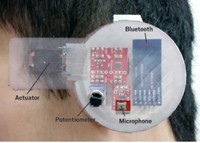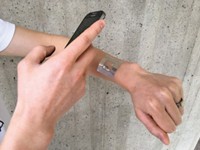Advertisement
Grab your lab coat. Let's get started
Welcome!
Welcome!
Create an account below to get 6 C&EN articles per month, receive newsletters and more - all free.
It seems this is your first time logging in online. Please enter the following information to continue.
As an ACS member you automatically get access to this site. All we need is few more details to create your reading experience.
Not you? Sign in with a different account.
Not you? Sign in with a different account.
ERROR 1
ERROR 1
ERROR 2
ERROR 2
ERROR 2
ERROR 2
ERROR 2
Password and Confirm password must match.
If you have an ACS member number, please enter it here so we can link this account to your membership. (optional)
ERROR 2
ACS values your privacy. By submitting your information, you are gaining access to C&EN and subscribing to our weekly newsletter. We use the information you provide to make your reading experience better, and we will never sell your data to third party members.
Analytical Chemistry
Electrochemical ring senses chemical threats
Wearable device sends wireless alerts when it detects explosives and nerve agents
by Stu Borman
October 16, 2017
| A version of this story appeared in
Volume 95, Issue 41
The field of wearable sensors is booming. Many people, for example, use Fitbits on their wrists to track their physical activity. Less attention has been devoted to wearables for defense applications, but Joseph Wang and coworkers at the University of California, San Diego, have now taken a step toward addressing that gap (ACS Sens. 2017, DOI: 10.1021/acssensors.7b00603). The researchers designed, constructed, and tested a battery-powered ring that monitors for explosives and nerve agents in air and liquids and sends wireless alerts, to a cell phone for instance, when it finds them. The outer surface of the ring has printed electrodes on it. A semisolid agarose hydrogel on the surface promotes analyte diffusion to the electrodes, which are linked to miniaturized electronics inside the device that interpret the electrochemical signals and transmit the data. The ring uses chronoamperometry and fast square-wave voltammetry to monitor nitroaromatic and peroxide explosives and organophosphate nerve agents. The researchers believe the device’s capabilities can be extended to other hazardous agents. “The miniaturization and integration of the electronics and sensors in a simple, compact, autonomous, and wirelessly connected unit is, from my perspective, the most remarkable aspect of the study,” comments nanosensors group leader Francisco Andrade of Rovira i Virgili University. “The device could also be attached to a wristband or hat or Velcroed to a garment,” he suggests.




Join the conversation
Contact the reporter
Submit a Letter to the Editor for publication
Engage with us on Twitter